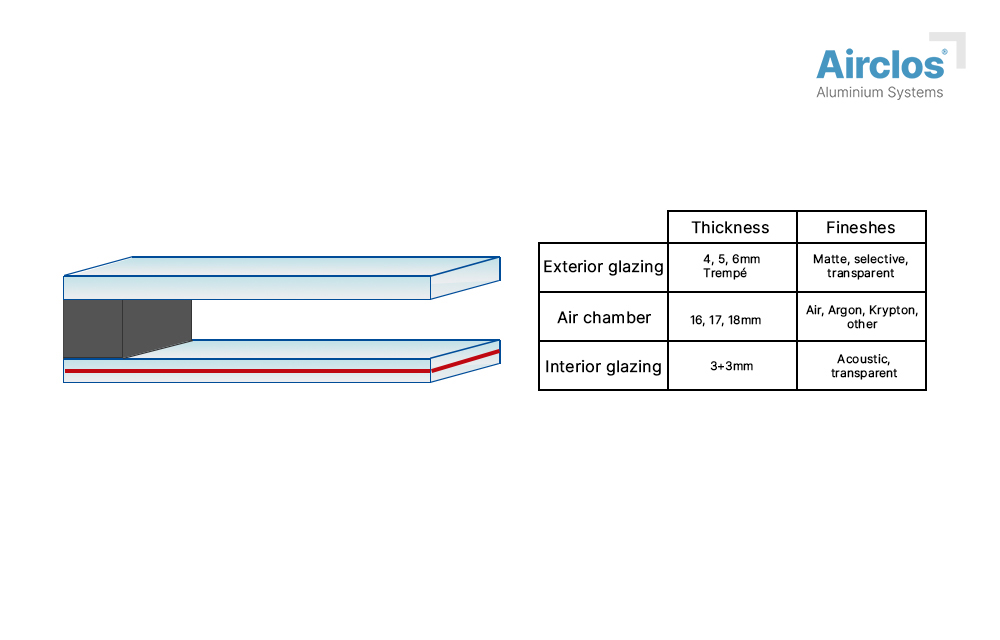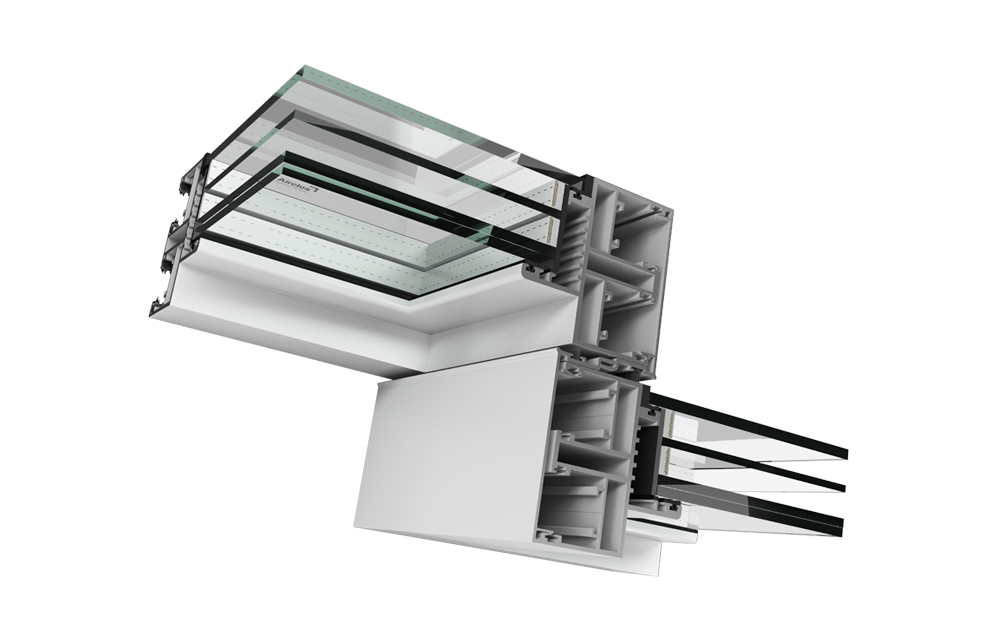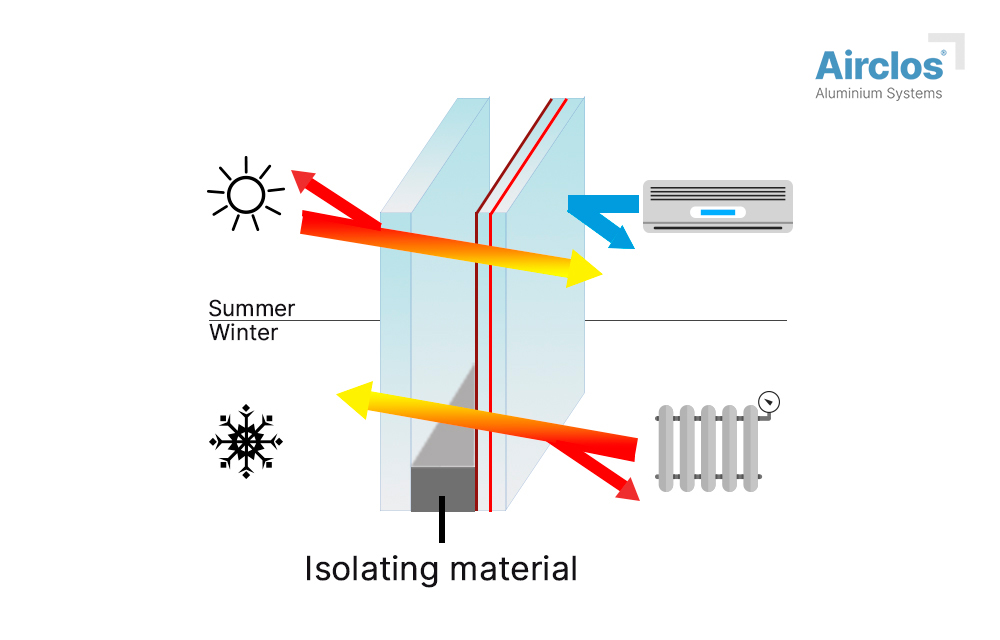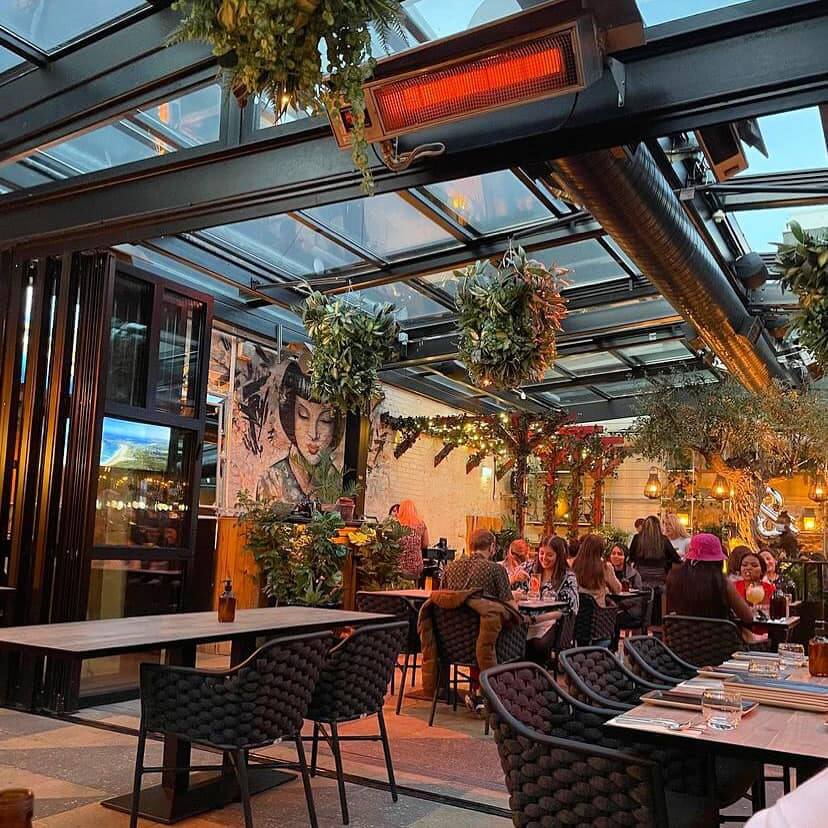
Airclos T8003 Retractable roof – TOPHOTELNEWS
Introducing Airclos T8003. Retractable roofs with triple glazing with Ug an Value of 0.5 W/m²K
Retractable roofs with triple glazing with Ug an Value of 0.5 W/m²K
Airclos introduces the new T8003 series. A series of retractable roofs with triple glazing with an Ug Value of 0.5 W/m²K designed to improve thermal insulation. This new system responds to the growing commitment of the architectural industry to design systems with lower consumption and reduced carbon footprint.
Our retractable roofs are specially designed to improve comfort prioritising transparency and a minimalist design. More than 80% of the surface of the system is glass, so developing this material has been crucial to achieve systems with greater thermal efficiency.
In addition to our main objective of lowering its Ug Value, it is important to mention that this system also offers a considerable acoustic improvement.
Double glazing / insulating glass
Double glazing is the most common solution in the window and enclosure market.
Double glazing or insulating glass is made up of two or more glass panels separated by a space that prevents them from being in contact with each other.
The inner space between the glass panels is usually filled with dry air or another inert gas such as argon gas. This reduces the thermal transmittance between the glass panels.
The best advantage of this type of glazing is, precisely, its versatility, as it is possible to create customised glass by combining each of its components according to the needs of the project.
For example: a product with highly beneficial features can be achieved by combining an insulating glass with a low-emissivity and solar control glass all in the same panel, even adding a laminate or acoustic laminate.

Triple glazing in Airclos retractable roofs
Triple glazing is based on the same premises as double glazing, except that its performance is increased on several levels by adding another space and an additional glass sheet.
Improved thermal insulation, reduced energy consumption and environmental impact.
As mentioned above, the main objective of using triple glazing is to reduce the Ug Value of the glass, thus enhancing its insulation.
The Ug Value is used to measure the temperature exchange between the inside and outside of a room. The lower the Ug Value, the less transmission there is and, therefore, less heat or cold will be lost in the home, which increases comfort and reduces energy consumption and environmental impact
To get a picture of it: it has been proven that up to 40% energy savings can be achieved with double-glazing windows, which would be even higher with triple glazing.
Flat glass can have a heat conductivity of 1.16w/°m²C, which can be reduced as more glass sheets and spaces are added. The composition of the glazing of our roofs has an Ug Value of 0.5w/°m²C.

Improved acoustic insulation
Another of the main advantages of triple glazing is the increase in acoustic insulation.
A single glass panel or the regular insulating glass of a window in a residential building attenuate around 30-38db. Some double glazing can attenuate from 39db and even 40db with acoustic treatment.
Triple glazing attenuates 42db, and up to 45db if acoustic treatment is added. This significant improvement makes this product especially interesting for applications such as indoor patios in restaurants.
Triple glazing composition in the T8003 series
To further understand it, the composition of the triple glazing used in the manufacture of our T8003 series of retractable roofs is analysed below:
4+4 low-emissivity / 16 argon space / 4 tempered / 16 argon space / 6 tempered low-emissivity and sun protection
- Inner glass: 4+4 mm Low-emissivity glass
- First space: 16 mm argon gas
- Intermediate glass: 4 mm Tempered glass
- Second space: 16 mm argon gas
- Outer glazing: 6 mm Tempered, low-emissivity and sun protection glass

Advantages of using argon gas in our retractable roofs
Argon is a noble gas with great insulating potential that offers great advantages when used under the right conditions.
It is odourless, colourless and non-flammable, which makes it particularly attractive from a safety point of view.
It is important to keep in mind that argon gas needs to be used with the right components in order to take advantage of its full potential. For example, when used with low-emissivity glass and good carpentry, its thermal and acoustic insulation value increases significantly. Without these components, it simply will not add any improvements to the system.
How does argon gas influence thermal insulation?
Argon gas has a higher density than air. Thanks to this special relationship between mass and volume, this gas is able to reflect heat better, maintaining the comfort of the different areas more easily and, therefore, reducing energy consumption in air conditioning.
How does argon gas influence acoustic insulation?
As with thermal insulation, the argon between the glass sheets causes the sound waves to partially bounce back and dissipate in an attenuated form.
How is the performance of triple glazing increased
As already explained for its composition, the glass used is reinforced with two types of treatment: low-emissivity and sun control glass. In addition, acoustic glass can be added to this type of glass if necessary. Let’s see how each of them works.
- Low-emissivity glass with solar control (Low-e+Sc): reduces the amount of heat that enters the area, so it is especially useful for weather with high temperatures and insolation.
- Low-emissivity glass (Low-e): reduces the amount of heat that leaves the area and is lost, so it is especially useful in low-temperature weather.
- Acoustic glass: noise attenuation is increased by using acoustic polyvinyl butyral sheets, perfect for the most acoustically demanding environments.
Our studies conclude that the combination of low-emissivity glass in the inner layer with low-emissivity glass with sun protection on the outer layer is the most efficient composition for a wider range of weathers. The need for acoustic treatment will depend on the specific requirements of each project.

Best applications of triple glazing retractable roofs
Other articles are available in our blog section dedicated to retractable roofs, where we discuss the advantages of retractable roofs in general. Check out these articles if you wish to learn more about this subject. In this case, we will focus on the best uses of triple glazing retractable roofs.
Taking into account the advantages mentioned above, this system is perfect for:
- Reducing the Ug Value, energy loss and, therefore, energy consumption and environmental impact.
- Attenuating the acoustic impact.
These two premises make this type of enclosure especially suitable for businesses focused on leisure and hospitality.
Pubs, restaurants, hotels and other businesses in this category make large investments to guarantee their clients’ comfort (in heating, air conditioning, smoke vents…), which is why looking for solutions that reduce this cost will be highly profitable. In addition, reducing sound for a more comfortable atmosphere is also key in this type of business. That’s why our retractable roof from the T8003 series is particularly interesting for these cases.

The same properties must be taken into account for the walls. It makes no sense to install a high thermal performance retractable roof with glass walls because all the insulation offered by one system is lost in the other.
The best combination would be with our bi-fold doors of the S110 RPT or S112 RPT series, which provide a thermal insulation that measures up to the T8003.
Other potential applications are indoor patios or indoor pools. In these applications, the system is often completely surrounded by walls which guarantee the enhanced benefits of the glass. In addition, these are usually businesses that generate a lot of noise, so reducing noise transmission is also important, especially in residential areas.

